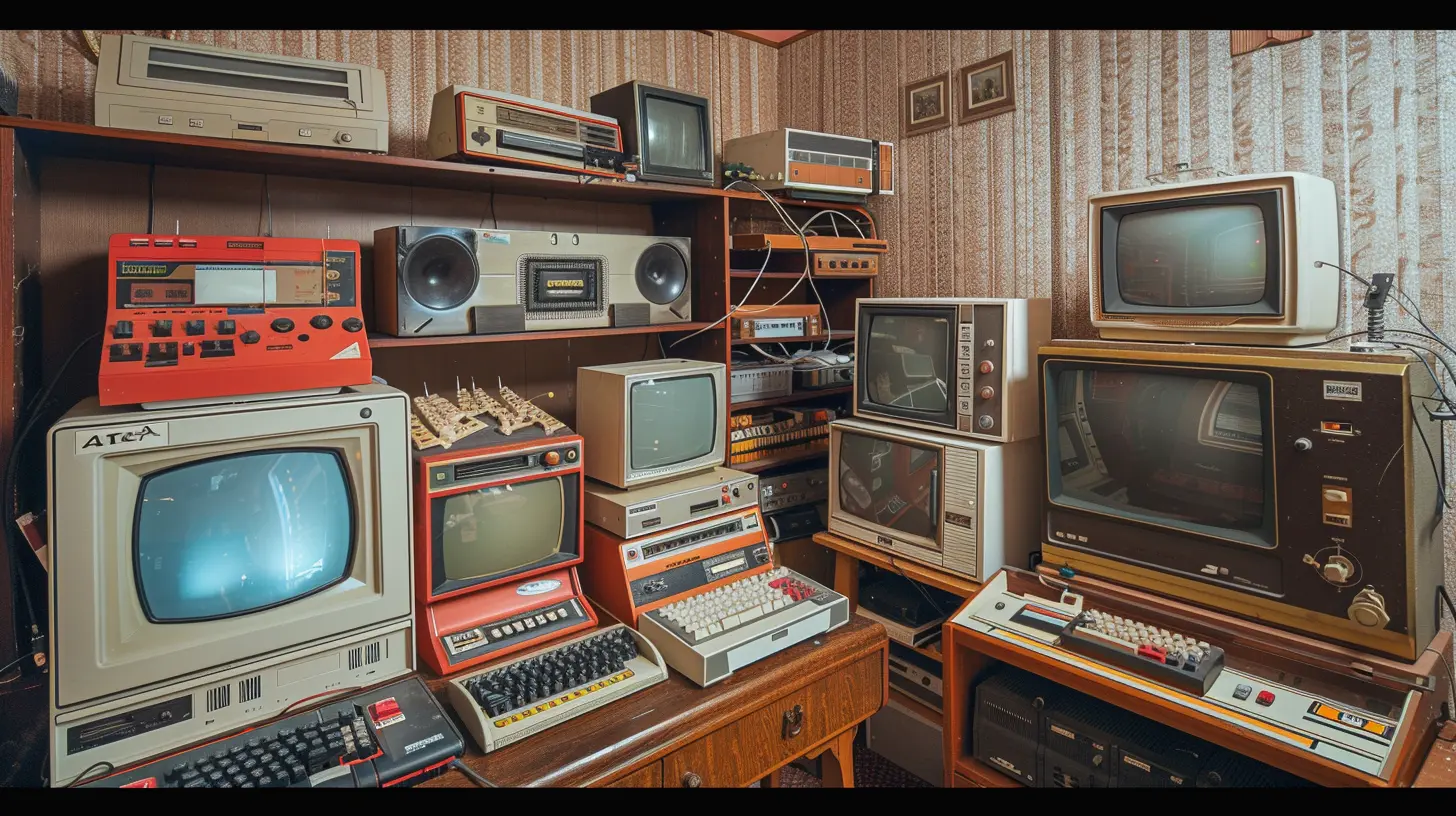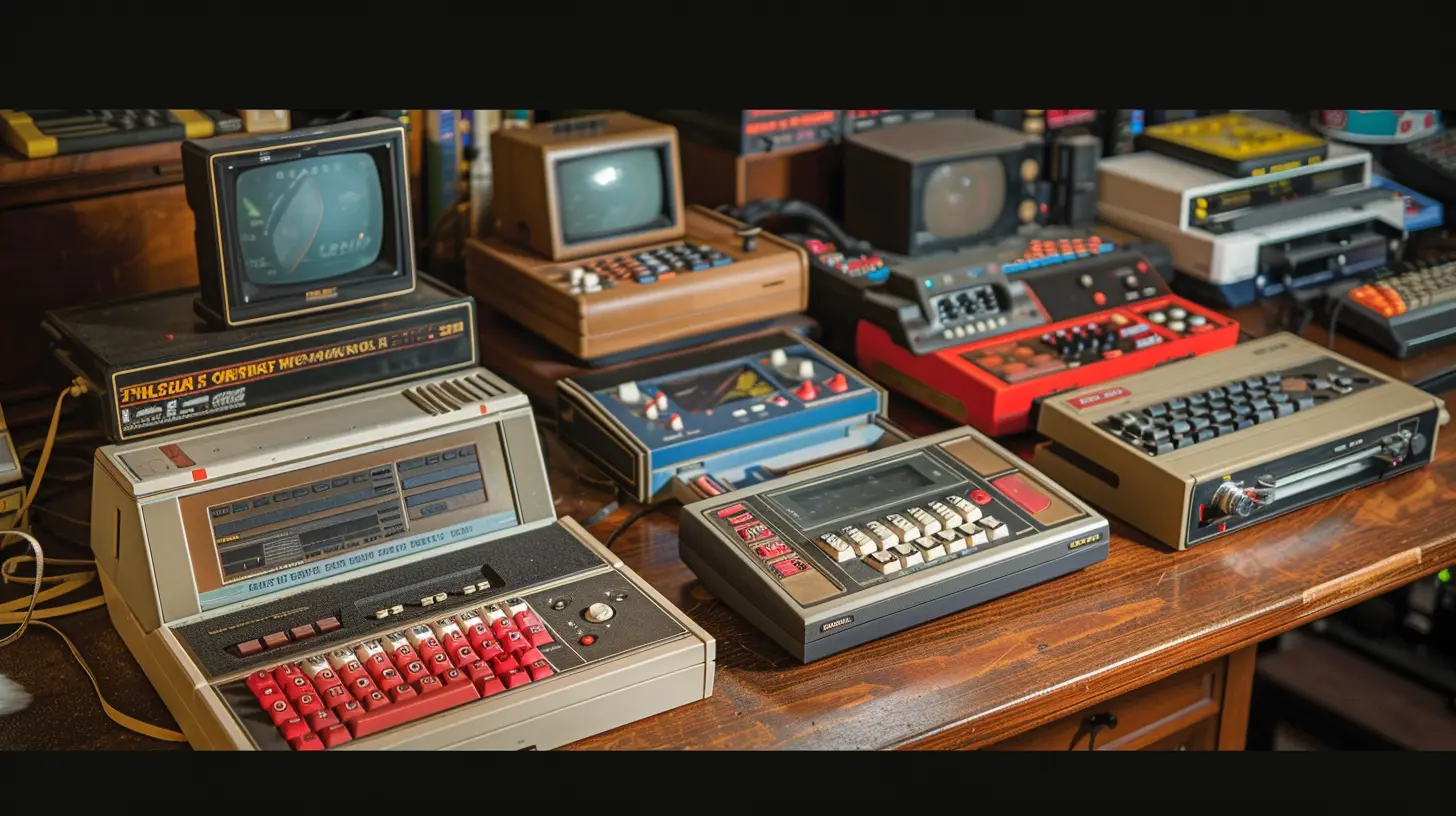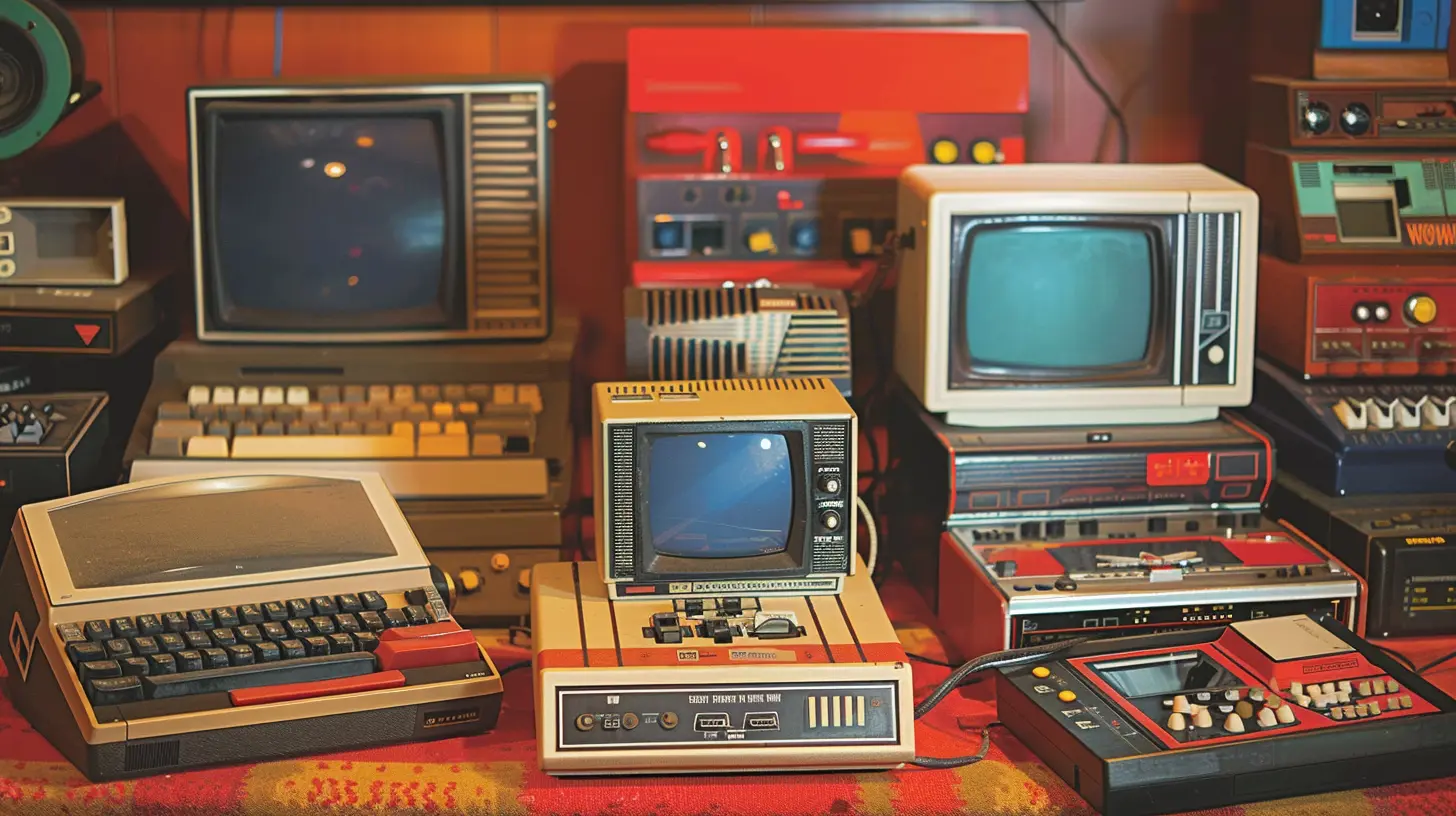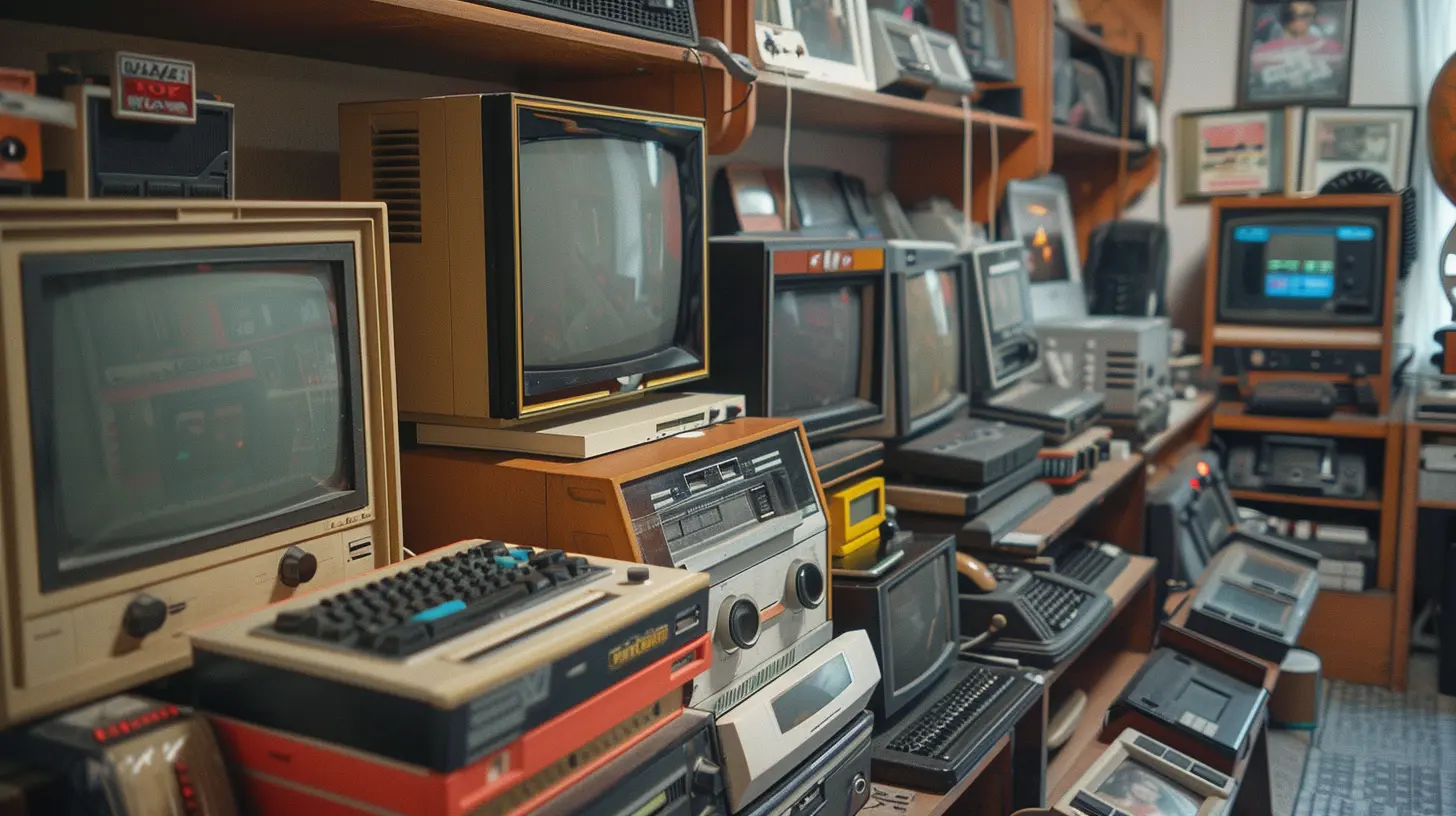The Early Years of Video Game Consoles: From Odyssey to Atari
8 July 2025
Hey there, fellow gamer or curious time traveler! Ever wonder where all this video gaming madness started? I mean, we’ve got hyper-realistic graphics today, online multiplayer battles, and open-world games that feel more vast than real life. But trust me, the roots of gaming are way more humble—and honestly, pretty fascinating.
Let’s rewind the clock and dive deep into the origin story of home gaming—those magical early years when video game consoles were just being born. From the quirky beginnings of the Magnavox Odyssey to the pixel-pushing triumphs of Atari, here's how it all began.
The Birth of Home Gaming: A Wild Idea in the '60s
Imagine this: It’s the 1960s. TVs are black-and-white, remote controls are a luxury, and nobody has even dreamed of “battle passes” or “FPS.” But one guy, Ralph Baer, was thinking way ahead of his time.Baer, often called the "Father of Video Games," had this crazy idea—why not make a game console that works with your television? In a world where the most exciting thing on TV was probably a game show or a soap opera, this was revolutionary.
His vision? Playable entertainment from the comfort of your couch. Sounds obvious now, right? That's because Baer lit the spark.
1972: The Magnavox Odyssey Changes Everything
And boom! In 1972, the Magnavox Odyssey hit the market. This baby right here? It was the first-ever home video game console. The godfather of them all.Now, let’s be honest—it was rough around the edges. The graphics? Non-existent. Players literally used plastic overlays that you stuck onto your TV screen to act as “backgrounds” because the console couldn’t generate visuals beyond a few on-screen dots. Yep, you heard that right—dots.
You controlled these dots with paddles, and games were super basic. Think Pong-style tennis, a haunted house game involving dice, and even a light rifle shooting game. Don’t laugh. At the time, this was cutting-edge stuff.
But don’t underestimate it. The Odyssey planted the seed for what would become a multi-billion-dollar industry.
Pong and the Rise of Arcades
Before we jump into Atari’s home console glory, we gotta talk about Pong. You can’t talk about the early days of gaming without name-dropping this icon.While the Odyssey quietly introduced gaming to homes, Pong exploded in arcades. Developed by Atari and released in 1972, Pong was inspired—let’s be real, pretty much copied—from the Odyssey’s tennis game. But Atari added sound, better controls, and that satisfying “blip” noise that hooked players instantly.
Suddenly, video games weren’t just some nerdy novelty—they were cool.
Enter Atari: Home Gaming Goes Mainstream
So, Atari started in the arcades, but they weren’t gonna stop there. Nope. In 1977, they dropped the Atari 2600 (originally called the Atari VCS—Video Computer System) and home gaming would never be the same again.This thing was a game changer—literally. It featured swappable game cartridges, which was huge. Before this, if you wanted to play a new game, you had to buy a whole new system. Atari said, “Nah, just pop in a new cartridge.” Boom! Instant replay value.
Key Features of the Atari 2600
- Joystick Control: The joystick became a symbol of gaming, and it was all thanks to the Atari 2600.- Swappable Cartridges: You could now collect games like baseball cards.
- Color Graphics & Sound: Ok, not mind-blowing today, but it was next-level at the time.
- Third-Party Developers: Atari’s rise also birthed the likes of Activision, paving the way for the game dev ecosystem we know today.
Suddenly, your living room was the new arcade.
Gaming Icons Are Born
With the Atari 2600, we saw the debut of characters and titles that would define pop culture:- Space Invaders (1980): People bought the console just to play this!
- Pitfall! (1982): One of the earliest platformers, and a massive hit.
- Adventure (1980): The first action-adventure game—talk about evolution.
These games weren’t just time-killers. They shaped genres, defined narratives, and started to turn developers into rockstars. This was the era when video games started telling stories—simple ones, sure, but stories nonetheless.
The Wild West of Early Gaming
Now, let’s not romanticize it too much. The early years were chaotic. Think of it like the Wild West—no rules, lots of experimentation, and not all of it good.Atari, in particular, started to lose control of quality. Anyone could make a game for the console, which led to a flood of terrible titles. Ever heard of “E.T. the Extra-Terrestrial” for Atari? Yeah, that infamous disaster reportedly led to millions of unsold cartridges being buried in a landfill. Ouch.
But even failures like that taught the industry valuable lessons—like why quality control matters.
Other Players in the Game
While Atari was the heavyweight, it wasn’t the only name on the block.Fairchild Channel F (1976)
This was technically the first console with true game cartridges. Unfortunately, it didn’t quite hit mass-market success like the Atari 2600.Coleco Telstar (1976)
Coleco dropped a whole bunch of Pong clones. None had lasting power, but they helped stoke public interest.Intellivision (1980)
Mattel came in swinging with better graphics and sound than the Atari. It even dared to claim it was the “smarter” console. It had some great titles, but Atari’s momentum was hard to beat.The Home Console Market Grows Up
By the early ‘80s, gaming had gone from a niche to a cultural phenomenon. Everyone wanted in—kids, teenagers, even adults got in on the action. Living rooms weren’t just for watching TV anymore.Though the industry would soon face a massive crash in 1983 (story for another day), these early years laid the groundwork for everything we have today.
It was raw. It was unpredictable. And it was exciting.
Top 5 Games That Defined the Early Console Era
Let’s take a quick nostalgia trip through some of the most influential games of the early console years:1. Pong – Simple, addictive, historic.
2. Combat (Atari 2600) – Tank battles, two-player mayhem!
3. Space Invaders – Made the home console feel like an arcade.
4. Adventure – Gave us the first “Easter egg” in gaming.
5. Pitfall! – The beginning of something bigger: the platformer genre.
These games might look primitive now, but their DNA is in every AAA game we play today. They were the pioneers.
Why the Early Console Era Still Matters
You might be thinking, "Cool history lesson, but why should I care?" Fair question.Here’s the thing: the early console era wasn’t just about making dots move on a screen. It was about imagination. It was about turning technology into experiential fun. These consoles were the stepping stones that led to the PS5, the Switch, and powerful gaming PCs.
Without the Odyssey, there’s no Pong.
Without Pong, no Atari 2600.
Without the 2600, who knows if gaming would’ve ever gone mainstream?
These consoles were the spark that ignited a global cultural phenomenon.
Final Thoughts: From Clunky Boxes to Cultural Icons
So next time you're online fragging your squad, or customizing your character in some open-world epic, take a second. Tip your hat to the Odyssey and the Atari 2600. They walked so your PS5 could run (or sprint, realistically speaking).It all began in living rooms with chunky TVs, clunky controllers, and games that were more imagination than graphics. And look where we are now.
The early years of video game consoles were all about daring to dream bigger than a TV screen. And man, did that dream grow.
all images in this post were generated using AI tools
Category:
Gaming HistoryAuthor:

Madeleine McCaffrey
Discussion
rate this article
2 comments
Aelith Hughes
Ah, the golden age of gaming! From the Odyssey’s pixelated adventures to Atari’s joystick magic, it’s a nostalgic quest that reminds us how far we’ve leveled up! 🎮✨
October 19, 2025 at 4:23 PM

Madeleine McCaffrey
Absolutely! The journey from the Odyssey to Atari truly showcases the innovation and creativity that laid the foundation for modern gaming. 🎮✨
Ezra Tucker
The journey from the Odyssey to Atari revolutionized entertainment and creativity, igniting a passion in countless gamers. These early consoles laid the groundwork for innovation, inspiring generations to dream bigger. Let’s celebrate the pioneers who turned pixels into adventures, forever changing how we play!
July 13, 2025 at 3:33 PM

Madeleine McCaffrey
Thank you! It's incredible how these early consoles shaped the future of gaming and inspired creativity across generations. Let's honor those pioneers!

